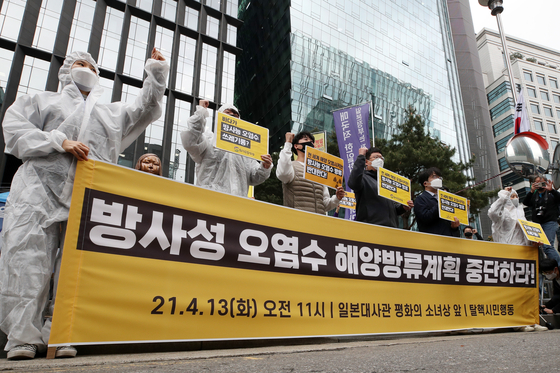On April 13, the Japanese government announced the release of over 1 million tons of treated water from the destroyed Fukushima nuclear station. Since the disaster in 2011, radioactive water that has accumulated at the plant has been treated in a complex filtration system then kept in huge tanks, but the plant operator, Tokyo Electric Power Co (Tepco), is expected to run out of storage by 2022. The advanced liquid processing system known as Alps removes most of the radioactive elements to levels below the international safety guidelines. However, some isotopes remain, such as tritium — a radioactive isotope of hydrogen that is only harmful to humans in very large doses.

The International Atomic Energy Agency (IAEA) supported Japan’s decision to dispose of treated water and promised to provide technical support in monitoring and reviewing the plan’s safe and transparent implementation. IAEA Director General Rafael Mariano Grossi stated that “Japan’s chosen water disposal method is both technically feasible and in line with international practice”. Still, the announcement was met with strong opposition from environment groups, neighboring countries, and the local fishing industry. Environment organizations like Greenpeace warned against radioactive material like carbon-14 remaining in the treated water, which could easily concentrate in the food chain and potentially damage DNA through accumulated dosage. The South Korean government expressed “grave concerns over the direct and indirect impacts the decision might have on the Korean people’s safety and surrounding environment” and stressed the need to “disclose information with transparency and make decisions through consultation with neighboring countries”. The spokesman of China’s foreign ministry Zhao Lijian responded more strongly, denouncing the plan as “extremely irresponsible” and daring the Japanese official to drink the water he claimed is safe. Local fishing communities also express worry that years of work to convince consumers that Fukushima’s seafood is safe will go down the drain.
The decision for treated water release sparked controversy across many channels, but unsubstantiated skepticism, rather than rational concern based on proper scientific evidence, dominated the discourse. Hashtags including “Fukushima water could destroy half the Pacific Ocean in 57 days” and “Japan is inflicting a disaster on other nations” surfaced on Weibo, a popular Chinese social media platform. In South Korea, an alliance of 31 anti-nuclear and environmental civic groups issued a statement expressing resentment at the Japanese government’s decision and vowed to do everything possible to prevent what it calls a “nuclear terror.”
However, contrary to popular concern, the consensus among scientists is that the impact on health due to the Fukushima water release is miniscule. Geraldine Thomas, chair of molecular pathology at Imperial College London noted that tritium “does not pose a health risk at all — particularly so when you factor in the dilution factor of the Pacific Ocean”.
Professor Yong Hoon Jeong from the KAIST Nuclear and Quantum Engineering Department, who has been a vocal critic of nuclear safety controversy, wrote that the treated water indeed does not pose significant health concerns and the best solution is to release transparent information and monitor closely. The normal tritium concentration of the ocean is 0.1 becquerel (activity of a quantity of radioactive material in which one nucleus decays per second) per liter and that of fresh water is 1 becquerel per liter. The concentration of tritium in the release site is below the international standard of 60,000 becquerels, and consuming 2 liter of this water daily for a year will amount to 0.8 milli-sievert (a measure of the health effect of low levels of ionizing radiation on the human body). According to the International Commission on Radiological Protection (ICRP) recommendation, 1 millisievert per year is the dose limit for the public and 20 millisieverts per year for the occupational radiation worker. Once released into the ocean, radiation exposure in Fukushima is estimated to be around 1 microsievert per year and in South Korea below 1 nanosievert. Tritium concentration level after the release will be comparable to that of fresh water, and accordingly, there is no health risk involved.
With the growing public mistrust for the government and scientists especially after a global pandemic, Japan’s decision to release treated water was met with fierce opposition and framed as a political issue. However, the safety of the water release is not a “controversial matter.” It is a validated scientific consensus. Storing the water in tanks costs a great amount of money and space, and the decision to release treated water is an important milestone that will help pave the way for continued progress in the decommissioning of the Fukushima Daiichi nuclear power plant.
It is okay to eat fish from Fukushima after the treated water release. It is also okay to travel to Japan after the travel restrictions are lifted. As STEM students, we must be able to give educated opinions when scientific discourses are masked as political matters.
The KAIST Herald is open to any other perspectives on the issue. For those interested in writing a contributor column, email us at kaistherald@gmail.com.

